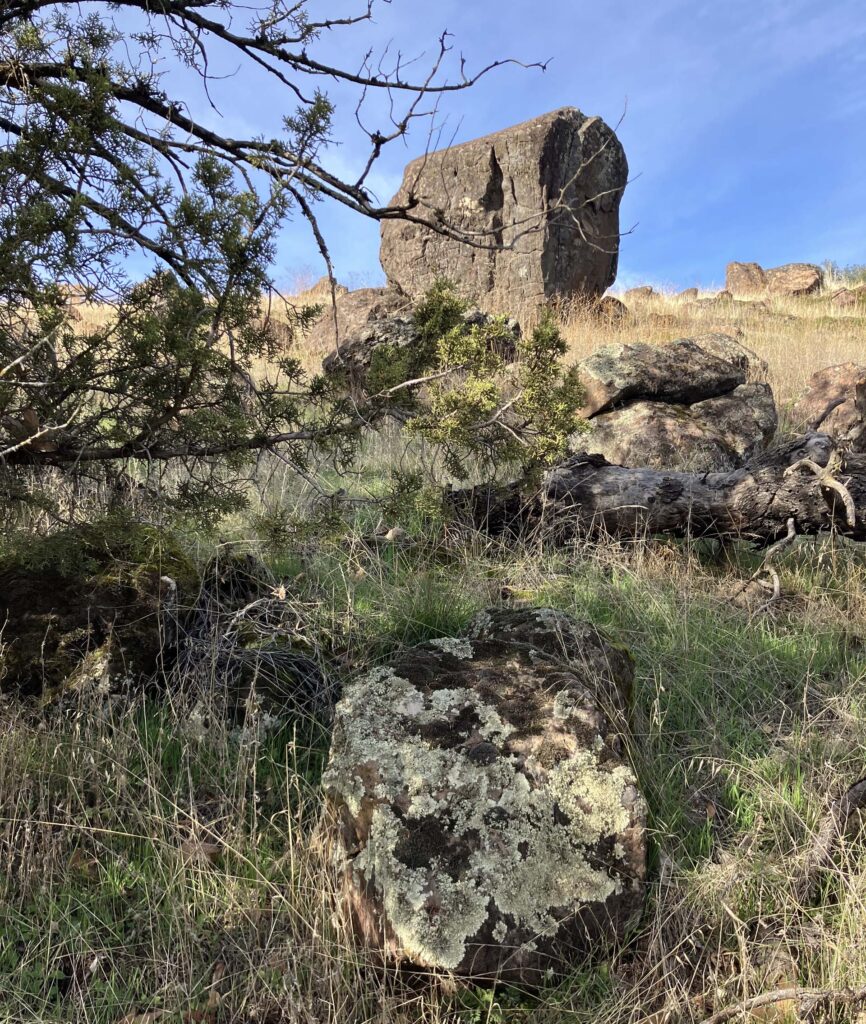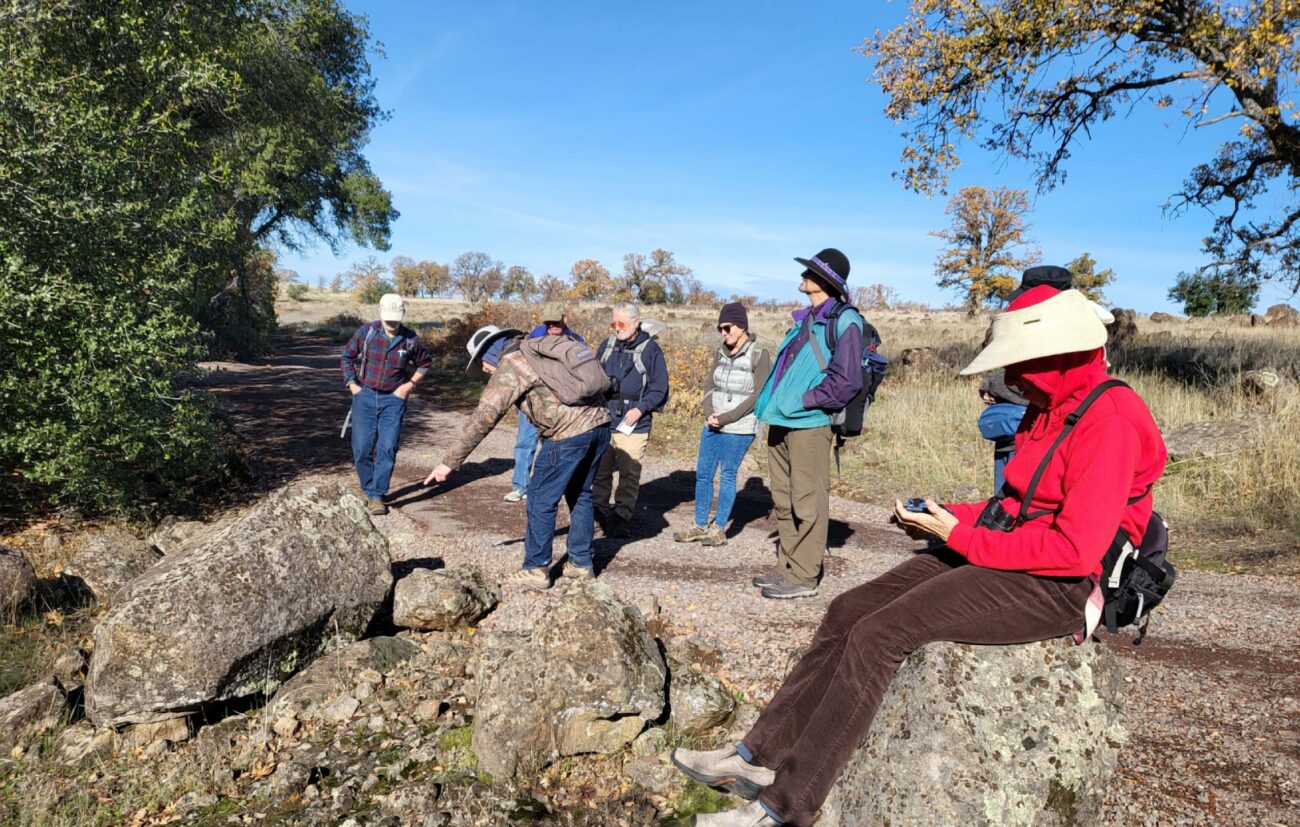
On this mid-morning field trip in the Sacramento River Bend Recreation Area in Tehama County, we walked upstream next to Paynes Creek and an adjacent water ditch that was being converted to storm-drain sized pipes.
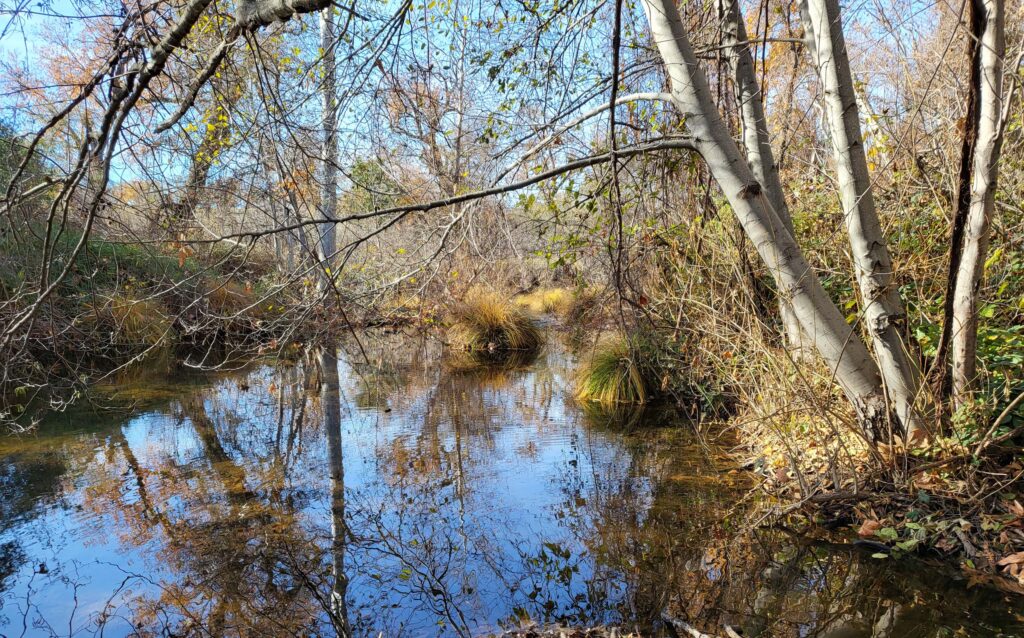
We walked along the boundary between two habitats: the rich soil of Paynes Creek floodplain on one side, and a hillside of dry grasslands with a few scattered shrubs and blue oaks on the other. We were close enough to the creek to be under the canopy of large California sycamores, Fremont cottonwoods, and valley oaks. Other trees under the canopy included shrubby hop trees, California buckeyes, figs, and Oregon ash.
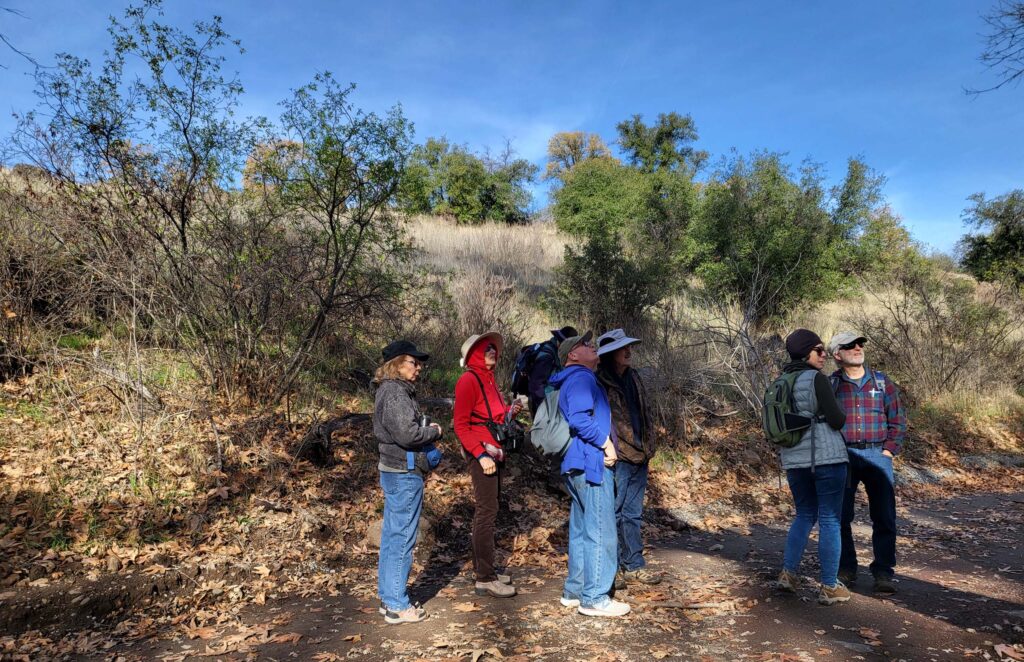
Apparently the valley elderberry longhorn beetle is occupying some of the blue elderberry shrubs as most were fenced off to prevent overly enthusiastic diversion canal workers from cutting them down by mistake.
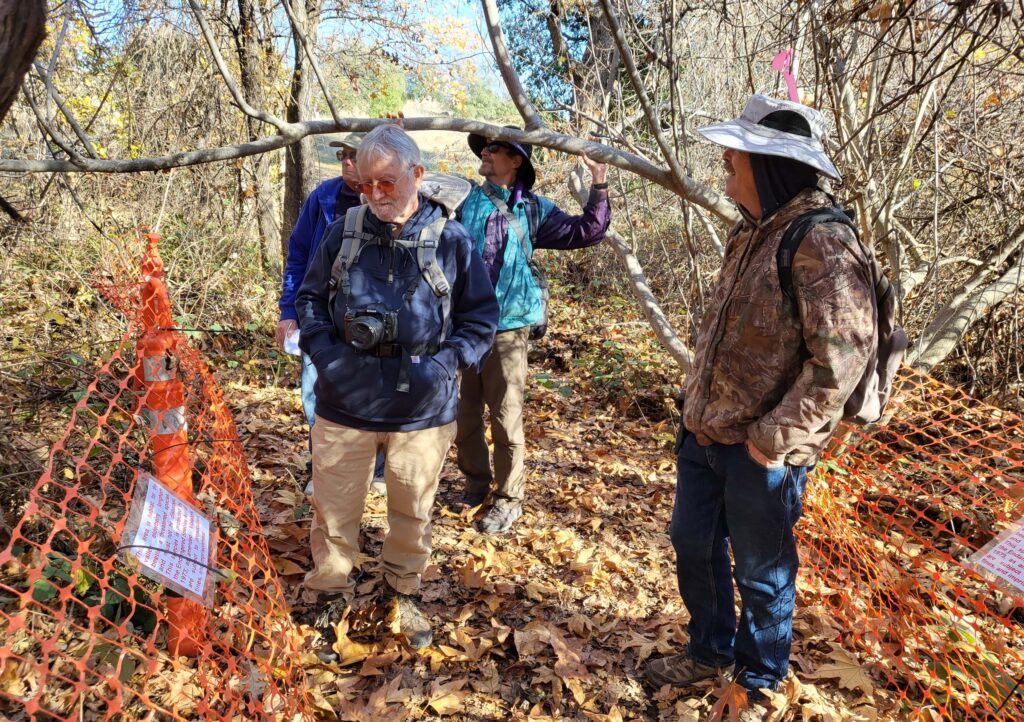
Photo © Doug Mandel.
On the drier sections of the walk, we found hollyleaf redberry, California juniper, blue oak, interior live oak, foothill ash, and buckeye. About the only plant in bloom was naked buckwheat, but we could identify vinegar weed by its smell; stinging nettle by its leaf; and buckeye by stem color, shape, and bud. Next to and on some of the boulders in the slightly shadier areas were mats of clubmoss, Selaginella sp., a primitive non-flowering vascular plant just up the evolutionary tree from mosses.
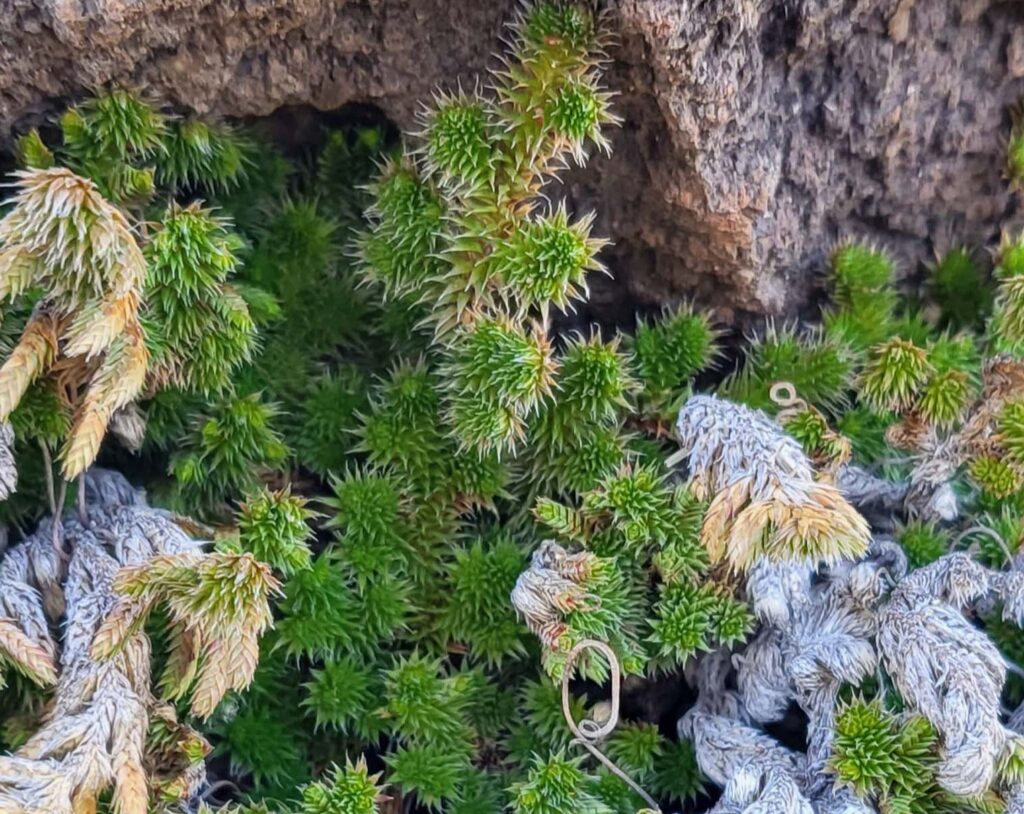
The rocks and boulders on the trail had an amazing variety of lichen species on them, some with up to ten different species on the same rock. ~David Ledger
